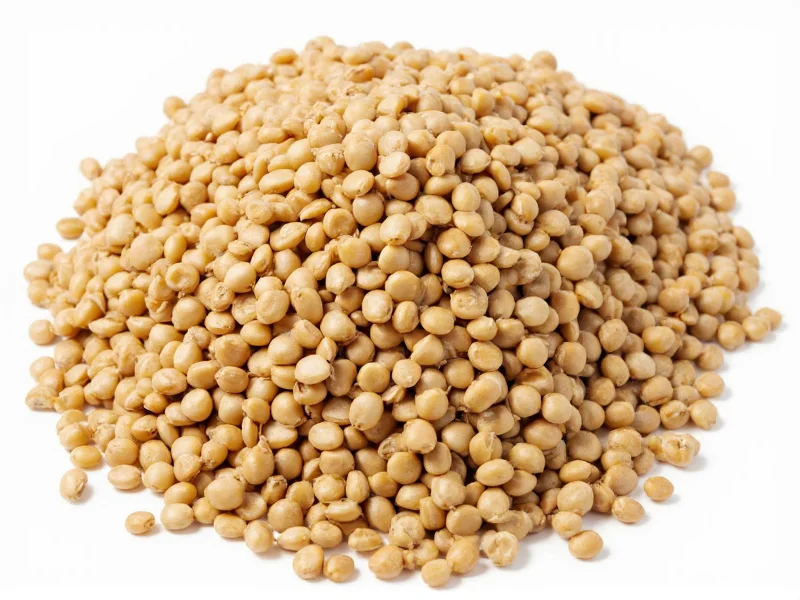Understanding the Lentil: A Comprehensive Definition
Lentils represent one of the oldest cultivated crops in human history, with archaeological evidence dating back to 8000 BCE. As a member of the legume family, lentils grow in pods containing one or two seeds, characterized by their distinctive lens-like shape that gives them their botanical name Lens culinaris.
Botanical Classification and Characteristics
Scientifically classified as Lens culinaris Medik., lentils belong to the Fabaceae (legume) family, which includes beans, peas, and chickpeas. Unlike many legumes that grow on vines, lentils develop on small, bushy plants reaching 15-50 cm in height. The seeds themselves typically measure 3-10 mm in diameter and feature a flattened, biconvex shape that resembles a double convex lens—hence their name.
What distinguishes lentils from other pulses is their thin seed coat and lack of a hard outer shell, which means they cook faster than many beans and don't require pre-soaking. This characteristic makes them particularly valuable in regions with limited fuel resources.
Common Varieties of Lentils
Lentils come in numerous varieties, each with unique culinary properties:
| Variety | Color | Cooking Time | Common Uses |
|---|---|---|---|
| Brown Lentils | Olive green to brown | 20-30 minutes | Stews, soups, Indian dal |
| Green Lentils | Speckled green | 25-30 minutes | Salads, side dishes |
| Red/Yellow Lentils | Orange to yellow | 15-20 minutes | Curry, purees, baby food |
| Black Beluga | Jet black | 25-30 minutes | Garnishes, salads |
| Puy Lentils | Dark green-gray | 25 minutes | French cuisine, salads |
Nutritional Profile and Health Benefits
Lentils provide exceptional nutritional value, containing approximately 25% protein by dry weight—nearly double that of wheat and three times that of rice. A single cup of cooked lentils delivers:
- 18g of plant-based protein
- 15g of dietary fiber
- Significant iron, folate, and manganese
- Low fat content (0.8g per cup)
- No cholesterol
Research shows regular lentil consumption supports heart health through soluble fiber that helps reduce LDL cholesterol. Their low glycemic index (around 30) makes them ideal for blood sugar management, while their high folate content benefits pregnant women. Unlike many protein sources, lentils provide complete nutrition without saturated fats.
Global Culinary Significance
Lentils feature prominently in cuisines worldwide, adapting to diverse cooking traditions. In India, dal (lentil soup) forms the cornerstone of daily meals. Middle Eastern cuisine features lentil soup (shorbat adas) as a staple, while French cuisine showcases Puy lentils in salads. Canadian and American cuisines increasingly incorporate lentils into vegetarian burgers and meat alternatives due to their texture and nutritional profile.
The versatility of lentils explains their enduring popularity—they can be boiled, steamed, pressure-cooked, or even eaten sprouted. Their ability to absorb flavors while maintaining texture makes them valuable in both simple and complex dishes.
Historical Context and Cultivation
Lentils originated in the Near East, with early cultivation sites found in Turkey, Syria, and Iraq. Ancient Egyptians included lentils in burial offerings, and biblical references mention them as food (Genesis 25:34). By Roman times, lentils had spread throughout Europe, becoming particularly important in Mediterranean diets.
Today, Canada leads global production (accounting for about 60% of exports), followed by India, Australia, and Turkey. Lentils thrive in cool, dry climates with well-drained soil, making them suitable for regions where other crops struggle. Their nitrogen-fixing properties improve soil fertility, supporting sustainable agricultural practices.
Storage and Preparation Guidelines
Proper storage maintains lentil quality for up to one year. Keep dried lentils in airtight containers away from light and moisture. Before cooking, rinse lentils thoroughly to remove debris and sort through them to eliminate stones or damaged seeds.
Cooking methods vary by variety:
- Red and yellow lentils break down easily, ideal for purees and soups
- Brown and green varieties hold their shape better for salads and side dishes
- Black beluga and Puy lentils maintain firm texture even after cooking
For optimal nutrient retention, avoid adding acidic ingredients (like tomatoes or vinegar) until lentils are fully cooked, as acidity can toughen the seeds and increase cooking time.
Environmental and Economic Importance
Lentils play a crucial role in sustainable agriculture systems. As nitrogen-fixing plants, they reduce the need for synthetic fertilizers by converting atmospheric nitrogen into soil nutrients. Their relatively low water requirements (about 400mm annually) compared to other protein sources make them environmentally efficient.
Economically, lentils provide affordable nutrition in developing regions and represent an important export crop for producing countries. Their shelf stability and nutritional density make them valuable in food security programs worldwide.
What is the scientific name for lentils?
The scientific name for lentils is Lens culinaris. This botanical name reflects their distinctive lens-like shape and culinary purpose.
Are lentils considered a grain or a legume?
Lentils are legumes, not grains. They belong to the Fabaceae family along with beans and peas. While often grouped with grains in culinary contexts as "pulses," they are botanically distinct from true cereal grains like wheat or rice.
How do lentils differ from other legumes?
Lentils differ from other legumes primarily in their size, shape, and cooking properties. They're smaller than beans, have a lens-like shape, lack a hard outer shell, and typically cook faster without requiring pre-soaking. Unlike chickpeas or kidney beans, most lentil varieties break down more easily when cooked.
What makes lentils nutritionally unique?
Lentils provide a rare combination of high protein (about 25% by dry weight) and high fiber content in a single plant-based food. They're particularly rich in folate, iron, and manganese while being naturally fat-free and cholesterol-free. Their low glycemic index makes them valuable for blood sugar management.
Can you eat lentils raw?
While lentils can be sprouted and eaten raw in that form, dried lentils should not be consumed uncooked. Raw lentils contain lectins that can cause digestive discomfort. Cooking properly neutralizes these compounds and makes lentils safe and digestible.











 浙公网安备
33010002000092号
浙公网安备
33010002000092号 浙B2-20120091-4
浙B2-20120091-4